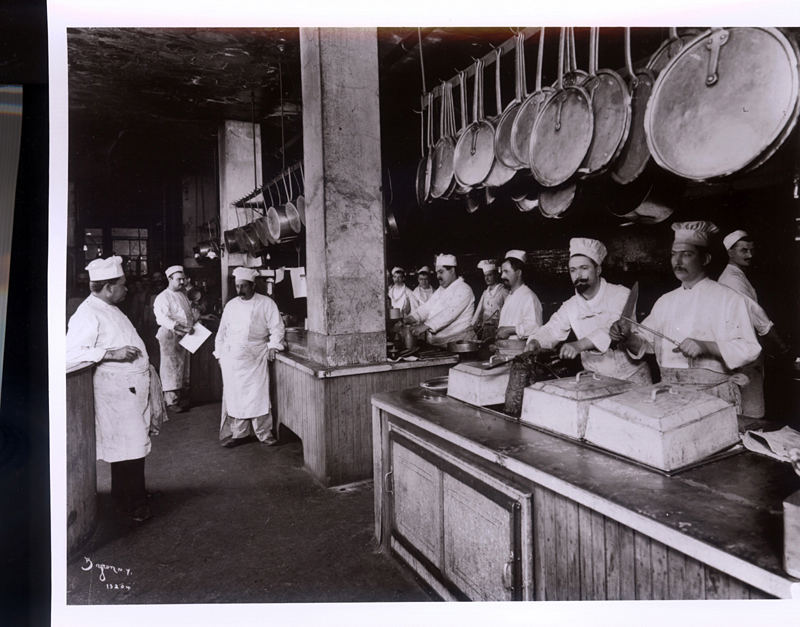
Delmonico's kicthen in 1902: "In the restaurant, smoking would now be permitted...this change was at the insistence of women."
This classic 1902 photo of Delmonico’s, a famed New York City restaurant opened in 1827 as a cafe and pastry shop, by erstwhile sea captain Giovanni Del-Monico and his brother Pietro, an experienced candy seller. The shop became a restaurant and inched uptown to new locations as Manhattan life gradually stretched northward. In the above photo, the restaurant had been relocated to Broadway and 44th Street by a new generation of Delmonicos, as the nineteenth-century was coming to a close. An excerpt about the move–and the changes instituted at the new locale–from the Steak Perfection site:
“On April 20, 1896, Young Charles Delmonico signed a 15-year lease and surprised the entire city when he announced that ‘Del’s’ would open a new restaurant farther uptown, at the northeast corner of Fifth Avenue and 44th Street. The city center had continued its move northward, and Delmonico continued to follow.
As the new structure was being built, everyone assumed that Delmonico’s Restaurant would continue at the Madison Square location on 26th Street. The location there was particularly convenient for shoppers, and it was nearby the crossing of Fifth Avenue, Broadway and 23rd Street, which was becoming known as the heart of the metropolis.
On November 15, 1897, the new Delmonico’s Restaurant on 44th Street opened to universal praise and some shock. In the restaurant, smoking would now be permitted (previously, smoking had been permitted only in the cafe). This change was at the insistence of women, who resented the fact that the men would ‘retire to the smoking room’ after dinner. With this change, women believed that the men would be averse to desert them after dining.
Another change and surprise was the addition of an orchestra, which would play ‘in the background.’ Previously, listeners were expected to cease movement and to concentrate when an orchestra played, so that they and all could enjoy the music. Now, music would be played while patrons ate and even talked.”
